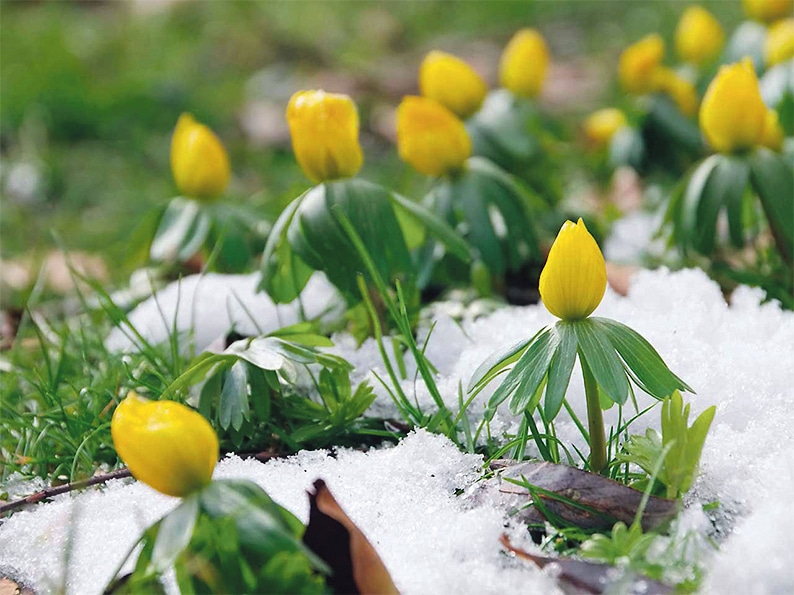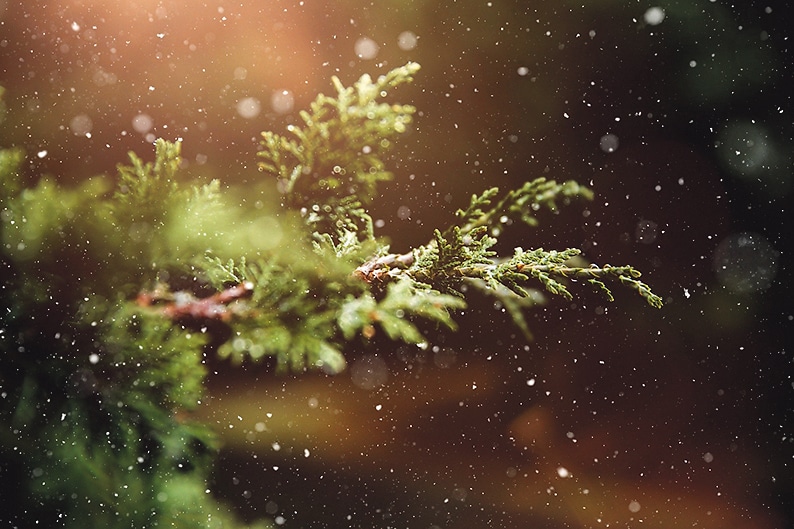
With the recent news of a new lockdown, the dark nights, and the prospect of a very different Christmas, we really need to focus on the brighter days ahead. I am already thinking of Spring. I have sown some annual flowers, including sweet peas, planted some garlic and sown broad beans. The best news, however, is that the bulbs I have ordered are on their way. Climate change, mass extinction of species and biodiversity are now everyday subjects and continually trying to do the right thing can be daunting and exhausting. Planting bulbs can be an easy and positive way to help the early pollinators get going in the spring. Lots of spring bulbs are really beneficial as well as beautiful and there is still time to both buy and plant them.
The first to pop through are Eranthis or winter aconites and snowdrops. Winter aconites are a welcome source of early nectar and, once established, will come back every year in increasingly large clumps. The common snowdrop Galanthus nivalis is the most attractive to the early bumble bees, and over the years snowdrops will form beautiful drifts of white to brighten up the short days of late winter. Crocus come next with their goblet shaped flowers full of nectar. I had quite a job getting crocus to establish in our light sandy soil. I used to blame mice, thinking they were feasting on them through the winter, but now, for some reason, I have some lovely patches of mauve and cream crocus, which happily return each year.
Who would have thought that the common grape hyacinth, Muscari armeniacum would provide a nectar feast for bees, and the list goes on. Narcissus can be useful particularly the old-fashioned Narcissus pseudonarcissus (Wordsworth’s ‘host of golden daffodils’) and Narcissus obvalaris, the Tenby daffodil. If more glamorous daffs are more to your liking apparently the scent is a pointer for nectar rich varieties. With my particular favourite, Tulips, it is better to go for the small specie tulips. These also have the added bonus that they are more likely to return every year. There are lots of other beautiful bulbs that are important for early pollinators, Alliums, Cammassia and Chinodoxa , with its common name Glory of the snow, who could resist it.
In a cottage garden there will also possibly be brassicas going to flower with beautiful plumes of scented flowers in various shades of yellow. These are much appreciated by the bees. Early flowers of broad beans are also heavily scented and beautiful. These flowers are much in demand with chefs looking for early edible decoration, but if you take the flower you don’t get the bean. Much better to leave them for the pollinators.
Fruit trees and flowering hedges will also help with biodiversity and were all elements of a traditional cottage garden. They really did know what they were doing, those old fashioned gardeners, with bits of this and that, no monoculture for them, but usually something to eat or put in a vase, sticks for kindling and apples to store. This is all starting to sound a bit romantic, but you see where I’m going.
I still try to get out in the garden most days and I’m thankful for it in these weirdest of times. I hope you can still find a garden centre to buy some bulbs and seeds, so that you’ll have plenty to look forward to next spring.


